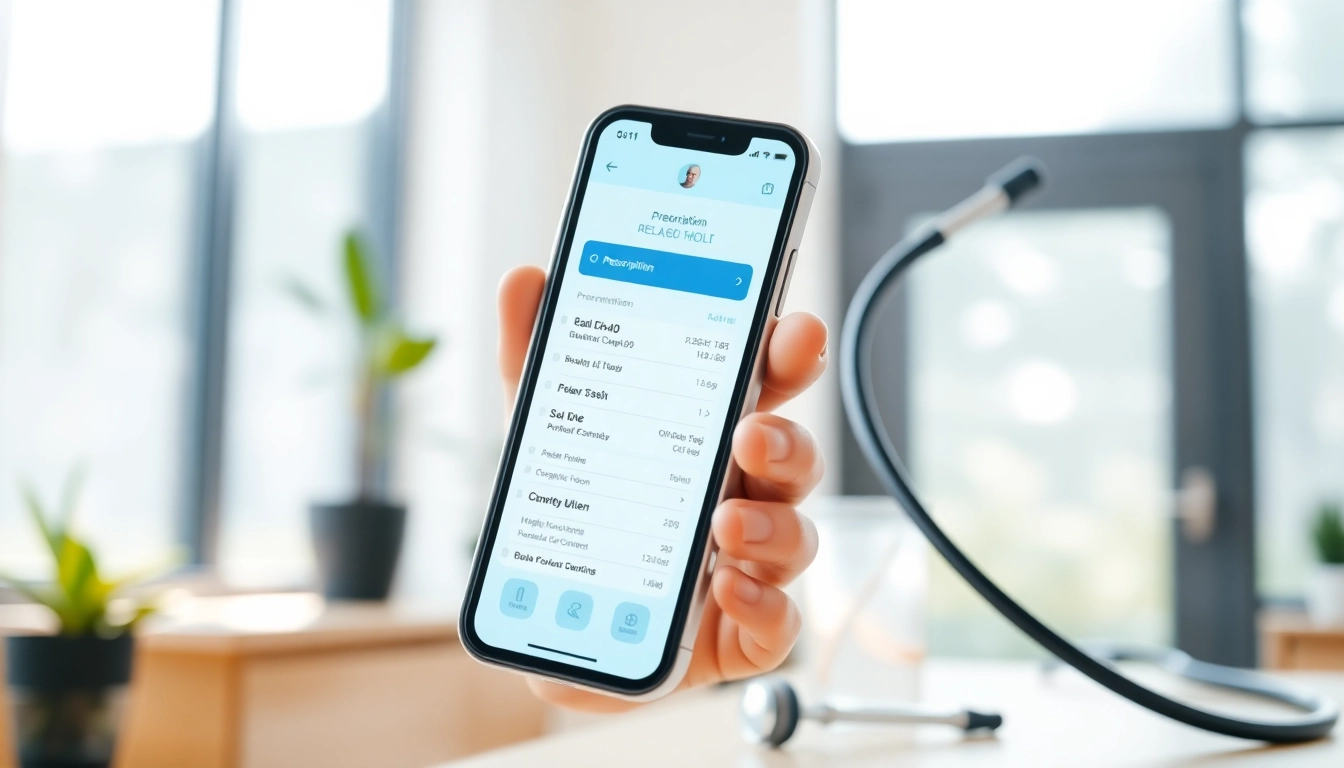Understanding How Does Eprescribing Work: A Comprehensive Guide
Introduction to E-Prescribing
What is E-Prescribing?
E-prescribing, or electronic prescribing, is the process by which healthcare providers generate and send prescriptions electronically rather than using traditional paper methods. This digital approach integrates patient data, medication history, and prescription management into a seamless workflow that enhances communication between prescribers and pharmacies. By eliminating handwritten prescriptions, e-prescribing aims to reduce medication errors, streamline the prescription process, and improve patient safety and care outcomes.
How Does Eprescribing Work?
Understanding how does eprescribing work requires familiarity with its underlying processes and technologies. The e-prescribing system facilitates the electronic transmission of prescription information from the healthcare provider’s office to the patient’s preferred pharmacy. This usually involves several key components: secure electronic health record (EHR) systems, integration of patient data, electronic medication formularies, automatic medication history checks, and real-time prescription eligibility verification.
Benefits of E-Prescribing
E-prescribing brings numerous advantages to the healthcare ecosystem, primarily focusing on enhancing patient safety and improving efficiency. Some core benefits include:
- Reduction of Errors: E-prescribing minimizes the risk of misinterpretation due to illegible handwriting or verbal miscommunications, ensuring accuracy in medication dispensed.
- Streamlined Workflow: By automating prescription processes, healthcare providers can save time, allowing them to focus on patient care rather than administrative tasks.
- Improved Patient Safety: E-prescribing systems often include alerts for potential drug interactions, allergies, and other clinical decision support tools, enhancing patient safety.
- Cost Reduction: With e-prescribing, unnecessary visits to pharmacies and errors that lead to costly rectifications can be avoided, ultimately reducing healthcare costs.
The E-Prescribing Process
Step-by-Step Guide on How Eprescribing Works
The e-prescribing process operates in a series of steps:
- Patient Visit: The process begins with a patient visit to a healthcare provider. During this encounter, the provider assesses the patient’s condition and determines if medication is needed.
- Prescription Generation: Instead of writing a prescription on paper, the provider inputs the medication details directly into an EHR or e-prescribing software.
- Electronic Transmission: The prescription is then electronically transmitted to the designated pharmacy. This includes critical information such as the patient’s details, dosage, and any special instructions.
- Pharmacy Processing: Upon receiving the prescription, the pharmacy verifies the information and prepares the medication for dispensing.
- Patient Notification: The patient is notified when the prescription is ready for pick-up or delivery, facilitating a smooth transaction.
Involvement of Healthcare Providers
Healthcare providers are pivotal within the e-prescribing process. They must be adequately trained in utilizing e-prescribing systems, ensuring that they can effectively input accurate prescription data and understand the software functionalities. Additionally, the role of providers extends to checking patient allergies and medication histories to minimize risks.
Communication with Pharmacies
Effective communication between healthcare providers and pharmacies is fundamental for successful e-prescribing. The systems utilized by both parties must be compatible to allow smooth information exchange. This interoperability can significantly enhance the accuracy and efficiency of medication dispensing.
Technological Components of E-Prescribing
Software and Systems Used
The backbone of e-prescribing relies on sophisticated software that integrates seamlessly with EHR systems. These systems typically feature:
- User-Friendly Interfaces: A simple and intuitive interface that providers can use with minimal disruption to their workflow.
- Secure Messaging Features: Encrypted communication channels that protect sensitive patient information.
- Integration with Clinical Decision Support: Features that analyze patient data and provide recommendations to prescribers.
Security Measures in E-Prescribing
Given the sensitive nature of health information, security is paramount in e-prescribing systems. Key security measures include:
- Data Encryption: Ensures that all transmitted data is secure from unauthorized access.
- User Authentication: Systems typically use multi-factor authentication to verify the identities of healthcare providers before allowing access to patient data.
- Audit Trails: Detailed logs of all transactions and modifications ensure accountability, allowing for tracing of any discrepancies.
Integration with Electronic Health Records
E-prescribing is most effective when integrated within a broader EHR system. This integration allows healthcare providers to access comprehensive patient histories, which is crucial for making informed prescribing decisions. Integration also simplifies the workflow, enabling a more coordinated approach to patient care, where providers have up-to-the-minute visibility into a patient’s medication records.
Challenges and Solutions in E-Prescribing
Common Issues in the E-Prescribing Process
Despite its benefits, the e-prescribing system is not without challenges. Some common issues include:
- Technical Glitches: Software outages or system failures can impede the e-prescribing process.
- Lack of Interoperability: Different systems may fail to communicate effectively, leading to delays or errors in medication dispensing.
- Provider Resistance: Some healthcare providers may be apprehensive to adopt new technology, preferring traditional methods.
How to Overcome Eprescribing Challenges?
To mitigate the challenges associated with e-prescribing, healthcare organizations can implement several strategies:
- Regular Training: Offering continuous training for healthcare providers can enhance their proficiency with e-prescribing systems.
- Technical Support: Providing an IT support team that can address technical issues swiftly can minimize disruptions.
- Choosing Interoperable Systems: Organizations should select e-prescribing systems that are compliant with established interoperability standards.
Best Practices for Implementation
Successful implementation of e-prescribing involves careful planning and adherence to best practices:
- Assess Needs: Evaluate the specific needs of the healthcare practice to tailor the e-prescribing system accordingly.
- Engage Stakeholders: Involve various stakeholders in the selection and implementation process to ensure buy-in.
- Monitor Performance: Establish metrics to assess the efficiency and accuracy of the e-prescribing process over time, making adjustments as necessary.
The Future of E-Prescribing
Innovations on How Does Eprescribing Work
The future of e-prescribing is poised for key innovations that can further enhance its capabilities:
- Integration of Artificial Intelligence: AI-driven systems could analyze patient data more comprehensively, offering personalized medication recommendations.
- Telehealth Integration: As telehealth continues to grow, e-prescribing will play an integral role in facilitating remote patient consultations.
- Blockchain Technology: The use of blockchain could enhance the security of prescription data, making it less vulnerable to cyber threats.
Impact on Patient Care
The ongoing evolution of e-prescribing holds promise for improving patient care. By enhancing the accuracy of prescriptions, reducing medication errors, and streamlining communication, e-prescribing can create a more responsive healthcare environment. Patients will benefit from increased access to medications and cleaner, safer prescribing practices.
Regulatory Changes in E-Prescribing
As e-prescribing becomes more commonplace, regulatory frameworks will likely adapt to address emerging issues. Healthcare organizations can expect future regulations to focus on defining standards for interoperability, data security, and ensuring the continued efficacy of e-prescribing systems. Staying abreast of these changes will be critical for healthcare providers to ensure compliance and maintain high standards of patient care.














Post Comment